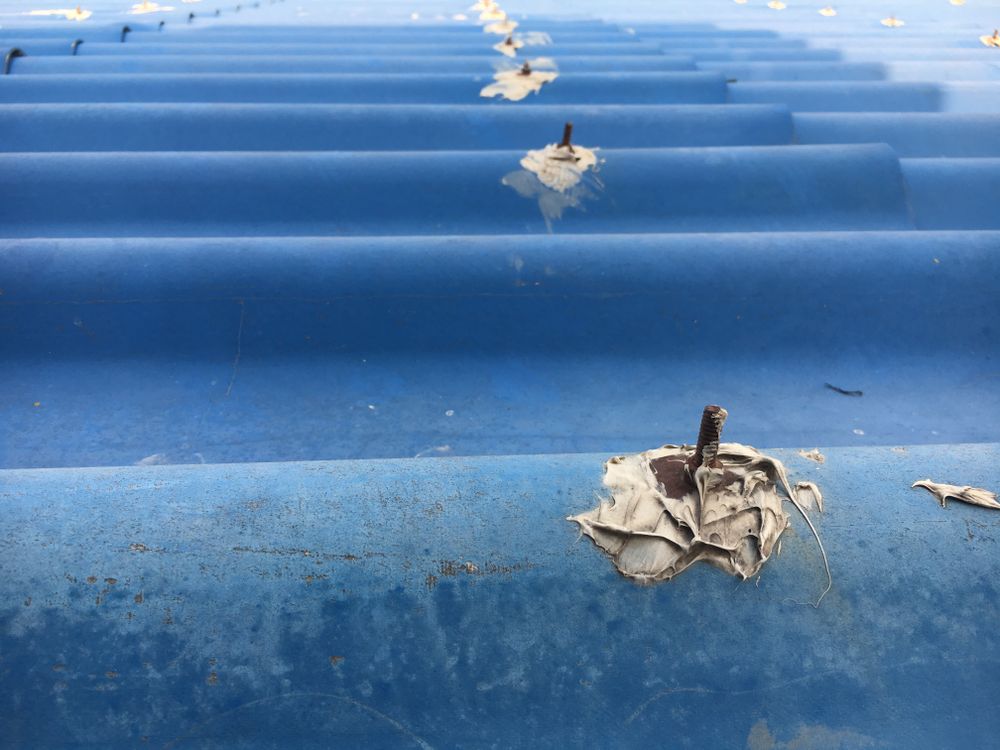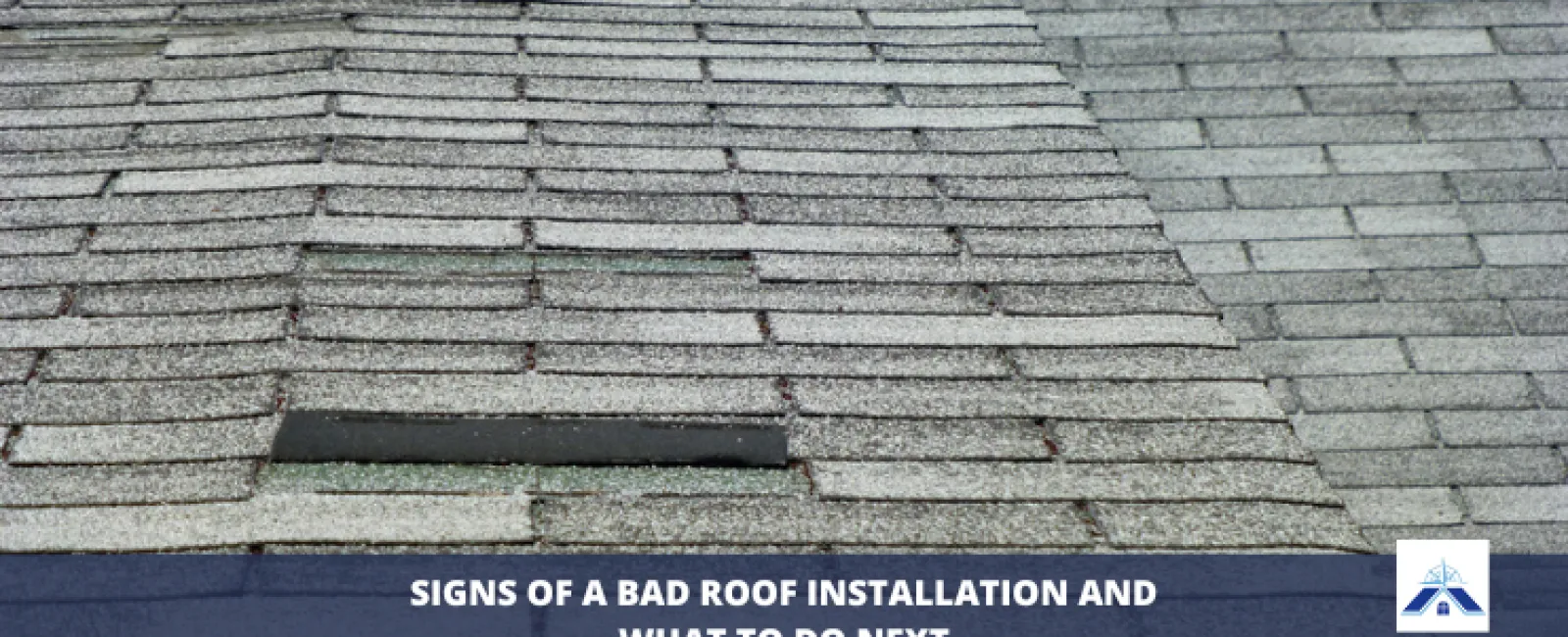Committing to a new roof is a major undertaking. Roof installation isn't just a hefty project—it's also a major investment. While you might have initially been satisfied with your new roof, new issues may uncover poor workmanship. The truth is that these issues could indicate a bad roof installation.
You don't want your home to suffer from a bad roof installation any more than you already have. Northpoint Roofing Systems is here to help you identify the signs of a poor installation, providing next-step solutions.
Spotting the Signs of a Bad Roofing Job
To be able to spot the signs of bad roof installation, you should know what the components of a roof installation are. Here are the various roofing components and common problems that may link them to a bad installation:
Asphalt Shingles. One roofing component that could signify a bad roofing installation is missing shingles or gaps in the shingles. When there are gaps between the shingles on your roof or they're missing in general, your previous roofers didn't do a great job of sealing them or installing them.
Roofing Nails. Issues with roofing nails can be traced back to poor installation. Your previous roofer should have followed the correct material and size guidelines for proper sealing. A lack of sealing with the correct size and type of roofing nail can lead to missing shingles and other issues down the road.

Underlayment. A roof's underlayment is the fabric-like material underneath the shingles. Issues with your roof's underlayment can be difficult to spot if shingles have already been installed. Improper underlayment installation can cause a roof to look uneven. This is typically caused by the previous roofers failing to fully roll out the underlayment, causing the material to bunch up in areas.
Ice and Water Protector. A thin layer of material, known as ice and water protectors, is needed for the edging and valley of the roof. This layer plays a role in protecting your roof from adverse weather conditions. It's also required by most building codes.
Like underlayment, it's tough to see if your roof has enough of this material— or any at all. A roofing inspector can check your roof and make sure it's up to building code standards. If your roof doesn't have enough (or any at all) roof replacement may be needed.
Drip Edge. A roof's drip edge is a piece of metal flashing on the edge of the roof. This directs water from the edge of the shingles and into your gutters. Inexperienced roofers may fail to add a drip edge to your roof, which can lead to water damage. A drip edge can be added later on, but it's important to have your roof assessed by a professional.
Other Flashing. Other flashing components like chimneys, valleys, dormers, and plumbing boots protect the roof in vulnerable areas from water intrusion. Missing areas of flashing or damaged flashing are common culprits behind a leak.
Your Roof Appears Uneven
An easy way to spot a bad roofing installation is if your roof is uneven or doesn't have a congruent look. A bad installation can leave a roof looking wavy and bumpy. The shingles may even appear to be lifting off the roof.
If these issues are localized, it's probably due to human error. However, if these issues are consistent across the entire roof, it's likely due to unprofessional and lazy workmanship.
The roofers responsible for your installation should be more than willing to fix the issue. If not, this is a clear sign of an unprofessional roofing company.
Your New Roof Leaks After The First Rain
If you notice your roof leaks after the first rain following installation, there's a problem. A roof leak right after installation is disheartening, to say the least.
That said, a roof leak doesn't automatically mean neglectful or lazy workmanship. One small area could just be an error or overlooked during installation. The roofing contractor you hired should be willing to respond and fix the issue.
Rotten Roof Decking Wasn't Replaced
Failing to replace a rotten roof deck is a major misstep. After all, a rotten roof deck is a hazard to your home's structural integrity and the safety of household members. Make sure to talk through this possibility with your roofing contractor to avoid confusion or neglect during the installation process.
Your Attic Lacks Proper Ventilation
The effectiveness of your new roof is also dependent on the ventilation system. Without proper ventilation, trapped hot air can deteriorate your decking adhesive and shingles. Condensation in the winter can also lead to sheath swelling, creating a wavy look.
Crucial Roof Components Were Left Off During Installation
Things can get problematic if your roofing contractor forgets these components during installation:
- Roof flashing
- Underlayment
- Flashing
- Pipe boots
- Vents
- The roofing material
- Drip edge
- Roof decking
- Ice and water protector
What To Do After a Bad Roof Installation
Just discovered your recent roof installation was a flop? Follow these steps:
1. Contact your original roofing contractor.
The first thing you should do is contact your original contractor. There should be a workmanship warranty in place to protect you from these instances. All reputable companies have one.
2. Report the roofing company to your state's licensing board.
If the roofing contractor who installed your roof is refusing to follow up on their warranty, report them to the state's licensing board. This way, the bond company will go after the roofing contractor for necessary repairs.
3. File a complaint to the Better Business Bureau.
A valuable resource to all customers, roofing-related or not, is the Better Business Bureau. The BBB is responsible for protecting consumers from unethical business practices. The BBB will serve as the mediator once you file a complaint against the original roofing company. Once the complaint is processed, which takes up to two days, the company will have 14 days to respond.
4. Civil litigation.
If the situation reaches newer heights, civil litigation can also be considered. Going to court with the roofing company takes time and resources, so you want to weigh if this route is worth taking.
5. Contact a second and reputable roofing contractor.
The next thing to do is find a second and reputable roofing contractor to inspect your roof. Once they've done a thorough inspection, they can provide you with repairs or replacements to a satisfactory level the original contractor couldn't.
Find a Roofing Contractor Near Your Area
Avoid a Bad Roofing Job by Hiring a Top-Rated Roofing Contractor
Avoid a bad roof installation by hiring a top-rated roofing contractor such as Northpoint Roofing Systems.
Northpoint Roofing Systems has all of the intangibles you need out of your roofing contractor. Contact us today for our roof installation services so you can rest assured that the job will be done right the first time.

